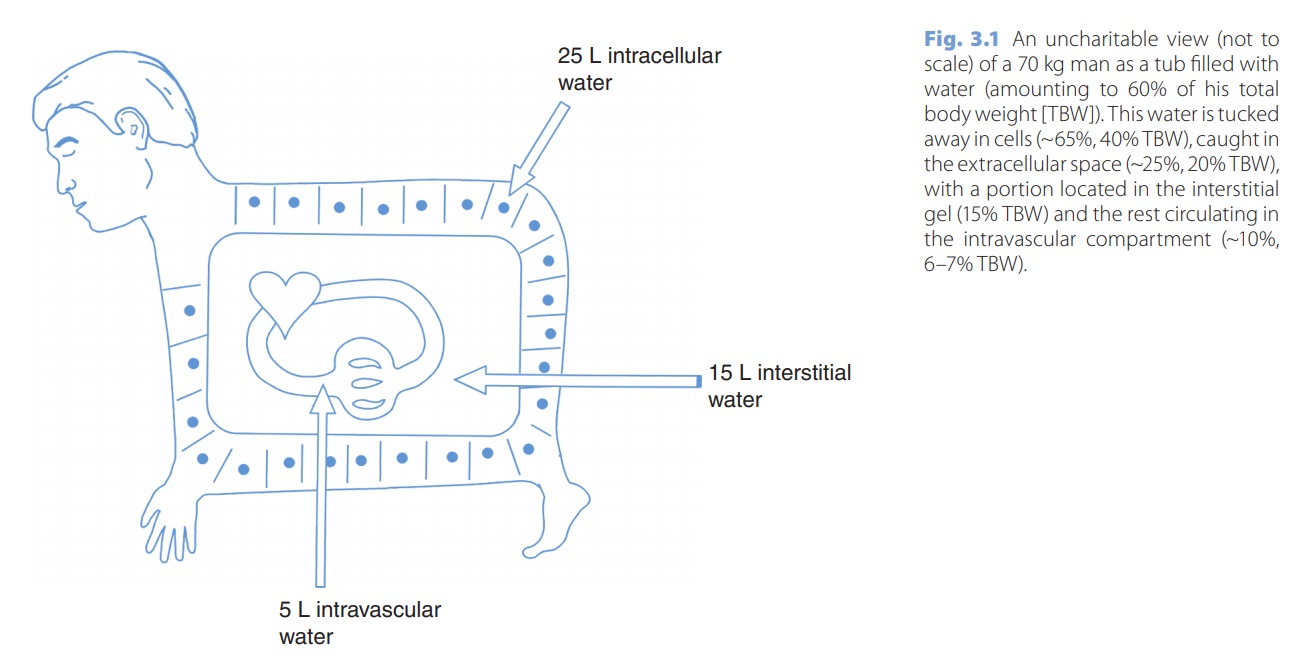Image

Source
Euliano, T. Y., J. S. Gravenstein, N. Gravenstein, and D. Gravenstein. 2011. Essential Anesthesia: From Science to Practice. Cambridge University Press. (page 34)
Language
English
English

"Third spacing" is a clinical term used to describe the abnormal movement of fluid from intracellular to interstitial spaces, commonly associated with burns or edema. When this fluid shift occurs, the body can experience hypovolemic shock, which is further complicated by the ways the fluid loss proves difficult to quantify as these interstitial spaces can accommodate incredible volumes of fluid. Like the Third Space in postcolonial studies, corporeal third spacing defies representation. As depicted in this image, in order to "see" the third space, the body must be altered to a state of unrecognizability; even then, in these depictions it remains unclear what the interstitial is, represented through the blankness between material structures.
Bhabha, H. The Location of Culture. New York: Routledge, 1994, p. 37.
Euliano, T. Y., J. S. Gravenstein, N. Gravenstein, and D. Gravenstein. 2011. Essential Anesthesia: From Science to Practice. Cambridge University Press, p. 34.